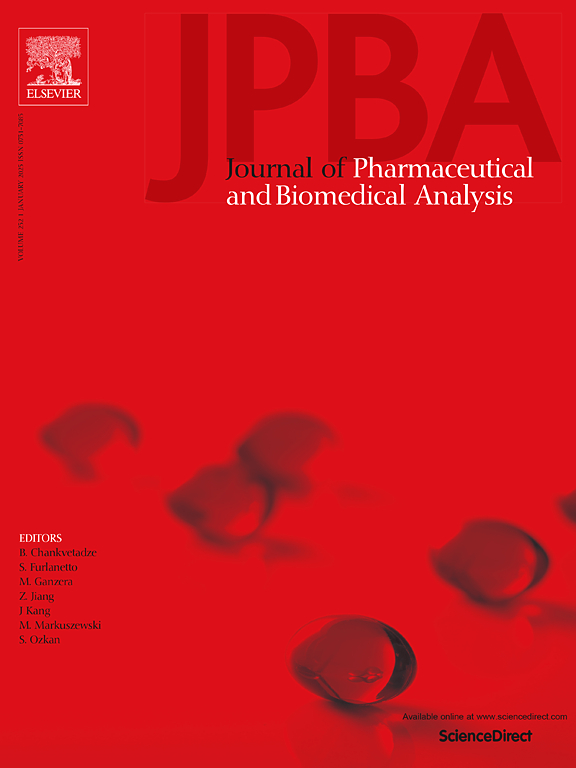Network analysis and experimental validation analysis reveal the mechanism by which psoralen improves glucocorticoid-induced growth retardation
IF 3.1
3区 医学
Q2 CHEMISTRY, ANALYTICAL
Journal of pharmaceutical and biomedical analysis
Pub Date : 2025-03-05
DOI:10.1016/j.jpba.2025.116801
引用次数: 0
Abstract
Glucocorticoids (GCs) are widely used, particularly concerning in pediatric patients. GC-induced growth retardation (GIGR) is one of its significant side effects. Endochondral ossification of growth plate chondrocytes is crucial for skeletal growth in children; excessive GCs inhibit growth plate development and longitudinal bone growth. Previous studies have shown that psoralen (PSO) has anti-osteoporotic effects, preserves cartilage homeostasis, and enhances chondrocyte proliferation. However, the specific mechanisms remain unclear. This study used network pharmacology and molecular docking to identify targets, followed by experimental validation to investigate how PSO affects damage to GC-induced growth plate chondrocytes. Results show that the PSO group exhibited significant increases in femoral length and growth plate size compared to the model group in rats. Additionally, testicular weight significantly increased in the PSO group compared to the model group. In vitro experiments demonstrated that PSO enhances proliferation and maintains cellular homeostasis in growth plate chondrocytes. Furthermore, experiments employing Western blotting, immunofluorescence, and other methods confirmed increased PI3K/AKT pathway activity, as well as elevated expression of cartilage-related proteins and reduced apoptotic proteins. Through network pharmacology, molecular docking, and experimental validation, we found that PSO stabilizes growth plate cell homeostasis and promotes cell proliferation by activating the PI3K/AKT signaling pathway. Therefore, PSO may be a potential therapeutic agent for improving GC-induced GIGR.
求助全文
约1分钟内获得全文
求助全文
来源期刊
CiteScore
6.70
自引率
5.90%
发文量
588
审稿时长
37 days
期刊介绍:
This journal is an international medium directed towards the needs of academic, clinical, government and industrial analysis by publishing original research reports and critical reviews on pharmaceutical and biomedical analysis. It covers the interdisciplinary aspects of analysis in the pharmaceutical, biomedical and clinical sciences, including developments in analytical methodology, instrumentation, computation and interpretation. Submissions on novel applications focusing on drug purity and stability studies, pharmacokinetics, therapeutic monitoring, metabolic profiling; drug-related aspects of analytical biochemistry and forensic toxicology; quality assurance in the pharmaceutical industry are also welcome.
Studies from areas of well established and poorly selective methods, such as UV-VIS spectrophotometry (including derivative and multi-wavelength measurements), basic electroanalytical (potentiometric, polarographic and voltammetric) methods, fluorimetry, flow-injection analysis, etc. are accepted for publication in exceptional cases only, if a unique and substantial advantage over presently known systems is demonstrated. The same applies to the assay of simple drug formulations by any kind of methods and the determination of drugs in biological samples based merely on spiked samples. Drug purity/stability studies should contain information on the structure elucidation of the impurities/degradants.

 求助内容:
求助内容: 应助结果提醒方式:
应助结果提醒方式:


